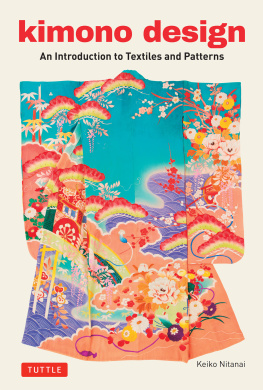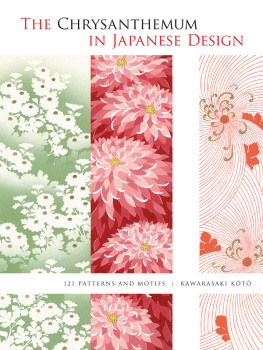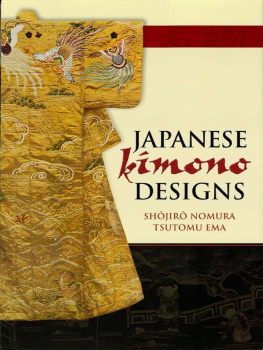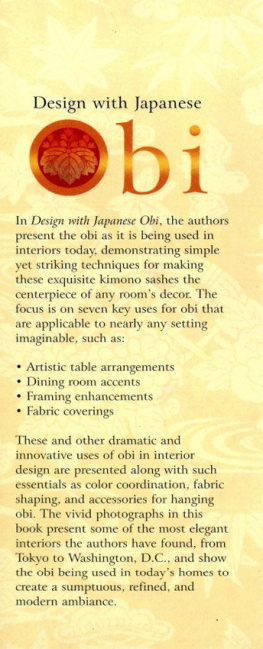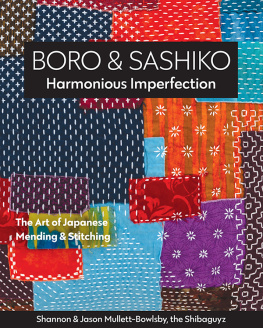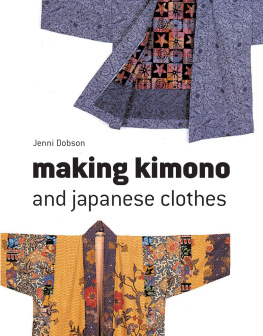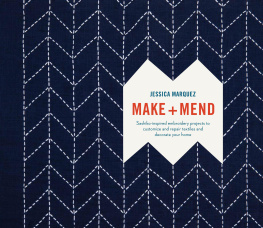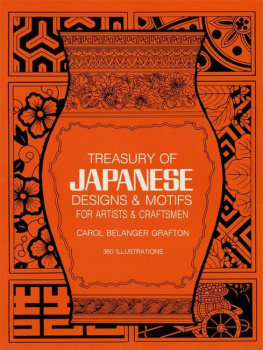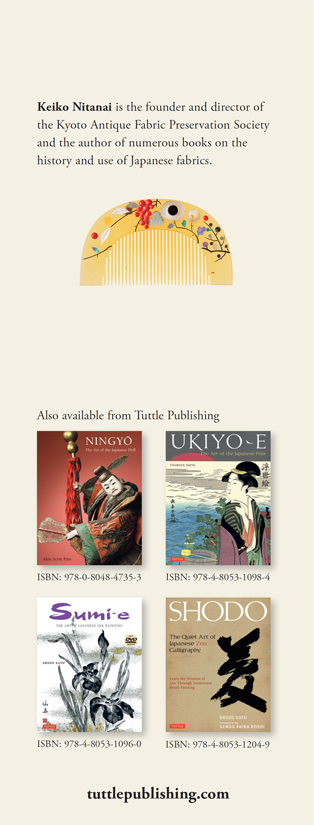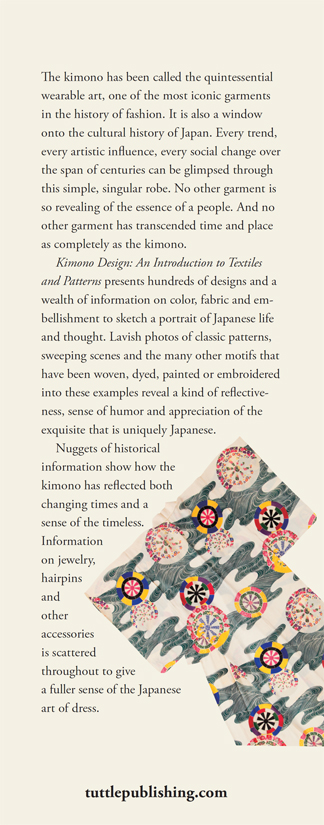About Tuttle
Books to Span the East and West
Our core mission at Tuttle Publishing is to create books which bring people together one page at a time. Tuttle was founded in 1832 in the small New England town of Rutland, Vermont (USA). Our fundamental values remain as strong today as they were thento publish best-in-class books informing the English-speaking world about the countries and peoples of Asia. The world has become a smaller place today and Asias economic, cultural and political influence has expanded, yet the need for meaningful dialogue and information about this diverse region has never been greater. Since 1948, Tuttle has been a leader in publishing books on the cultures, arts, cuisines, languages and literatures of Asia. Our authors and photographers have won numerous awards and Tuttle has published thousands of books on subjects ranging from martial arts to paper crafts. We welcome you to explore the wealth of information available on Asia at www.tuttlepublishing.com.
Contents




Published by Tuttle Publishing, an imprint of Periplus Editions (HK) Ltd.
www.tuttlepublishing.com
ISBN 978-4-8053-1428-9
ISBN 978-1-4629-1926-0 (ebook)
Library of Congress Control Number: 2016956551
Kimono no Monyou to sono Mikata: Monyou no Kakuzuke, Imi, Jidai Haikei, Yurai ga Wakaru
Copyright Keiko Nitanai 2013
English translation rights arranged with Seibundo Shinkosha Publishing Co., Ltd. through Japan UNI Agency, Inc., Tokyo
Translation 2017 by Periplus Editions (HK) Ltd.
Translated from the Japanese by Leeyong Soo
All rights reserved. No part of this publication may be reproduced or utilized in any form or by any means, electronic or mechanical, including photocopying, recording, or by any information storage and retrieval system, without prior written permission from the publisher.
Distributed by
North America, Latin America & Europe
Tuttle Publishing
364 Innovation Drive, North Clarendon,
VT 05759-9436 U.S.A.
Tel: 1 (802) 773-8930
Fax: 1 (802) 773-6993
www.tuttlepublishing.com
Japan
Tuttle Publishing
Yaekari Building, 3rd Floor, 5-4-12 Osaki,
Shinagawa-ku, Tokyo 141 0032
Tel: (81) 3 5437-0171
Fax: (81) 3 5437-0755
www.tuttle.co.jp
Asia Pacific
Berkeley Books Pte. Ltd.
61 Tai Seng Avenue #02-12, Singapore 534167
Tel: (65) 6280-1330
Fax: (65) 6280-6290
www.periplus.com
Printed in China 1612XL
20 19 18 17 10 9 8 7 6 5 4 3 2 1
TUTTLE PUBLISHING is a registered trademark of Tuttle Publishing, a division of Periplus Editions (HK) Ltd.
Index
Note: Page numbers correspond to the print edition.
accessories 35, 79, 153, 156, 167, 169, 175, 229; see also comb, hairpin, obi-dome
Art Deco 156, 1725, 228
Art Nouveau 25, 156, 228
calico 171, 205, 228; see also kowatari , sarasa
chijimi (lightweight crepe with a puckered surface) 152
China 13, 27, 35, 65, 87, 101, 129, 131, 137, 152, 159, 177, 219, 248, 261, 301, 304
chuya obi (reversible day and night obi) 10
cotton 35, 111, 117, 123, 223, 230, 245
crepe 25, 152, 165, 239; see also chijimi , kinsha , omeshi , ryujo-chirimen
dyeing 41, 57, 63, 1523, 171, 187, 199, 227, 255; see also tie-dye, yuzen
Edo period 13, 31, 33, 41, 61, 147, 152, 153, 156, 171, 189, 227, 229, 230, 237, 243, 259, 286
embroidery 53, 160, 187, 199, 229, 261
Expressionism 1823
fukuro-obi (double-woven obi) 25, 53, 76, 199, 227
furisode (single womans kimono with long sleeves) 25, 53, 233
gauze 78, 95, 139, 152
geisha 78, 178, 230
gosho-zome (floral-dyed) 230
hair decorations 47, 789, 175, 248
haneri (removable decorative collar for an undergarment) 79, 93, 175
haori (hip- or thigh-length kimono-style jacket) 65, 79, 243, 259
haori-himo (jacket strings) 79
homongi (semi-formal attire) 25, 239
homonfuku (semi-formal visiting attire) 239
ikat 25, 63, 79, 117, 181; see also kasuri , meisen , shibori
jofu (ramie linen) 152
kabuki 5, 19, 24, 78, 153, 229
kasuri (fabric made from fibers dyed using the ikat resist-dyeing technique) 63, 117, 181, 219, 230, 255, 285
kinsha (thin silk crepe) 239
kosode (short-sleeved kimono) 61
kowatari sarasa (printed calico) 171
linen 54, 111, 152; also see jofu
Meiji period 25, 41, 57, 152, 156, 175, 229, 230, 255
meisen (silk decorated with the kasuri or ikat technique) 63, 181, 217
mojiri-ori (weaving technique) 152
muslin 44, 57, 230; see also yuzen-zome )
nabeshima-sarasa (type of calico) 171
nagajuban (full-length kimono undergarment) 57, 79, 93, 112, 133, 259
Nagoya obi (most commonly used type of obi) 8, 18
Nara period 13, 73, 152, 159, 171
nobility 8, 101, 147, 165, 207, 209, 237, 261, 263, 286
obi-age (bustle sash) 79
obi-dome (obi sash brooch) 79, 93, 156, 175
obi-jime (obi sash cords) 78, 79, 156, 175
omeshi (heavy crepe silk woven of pre-dyed threads) 25, 165, 205, 282, 285; Majolica omeshi 2826
osanpogi (strolling attire) 239
Oshima (fabric characterized by splash patterns) 2535
pongee (luxury silk) 117, 130, 219, 245, 255
rinzu (silk satin damask) 33, 50, 53, 125, 222, 225, 239, 241, 292; figured satin 35, 69, 137, 239, 267, 290, 292
ryujo-chirimen (luxury grade of striped crepe) 163
sakai-sarasa (type of calico) 171
sarasa (calico) 171
shibori (ikat fabric) 79, 99
Showa period 5, 15, 23, 25, 29, 44, 47, 59, 63, 65, 67, 78, 79, 99, 109, 127, 139, 141, 149, 152, 156, 159, 175, 183, 228, 239, 259, 299
silk see crepe, gauze, kinsha , meisen , omeshi , pongee , rinzu
suehiro (folding fan) 177
Taisho period 13, 73, 152, 159, 171
Tale of Genji 53, 87, 105, 115, 2067
tasuki (sleeve strings) 230, 302
thread: dyeing, 25, 63, 165; in embroidery 50, 288, 294, 297; lam 285; in legend, 24, 101, 229; spools of (motif; see also odamaki ) 54; weaving 25, 33, 63, 152, 165, 239, 255
tie-dye, 25, 63, 76, 127, 187, 217, 219, 230, 255, 285, 294
tomesode (formal kimono worn by married women) 12, 61, 99, 199, 286
tsuitake (kimono tailored to the height of the wearer) 230
tsumugi see pongee
uchikake (outer robe) 189
uchiwa (round fan) 78, 147, 153
ukiyo-e 25, 147, 153, 215, 228
weaving 41, 54, 63, 101, 152, 285; see also mojiri-ori
Western: clothing 156, 228, 279; design 25, 285; flowers 31, 137, 149, 228, 291; style 156, 175; taste 219
wool 57
yukata (casual unlined summer kimono) 78, 111, 123, 153
yuzen (paste-resist method of dyeing) 152, 227
yuzen-zome (muslin) 230
Next page
